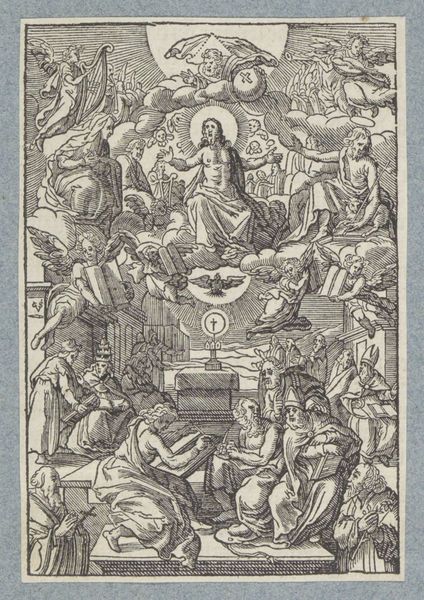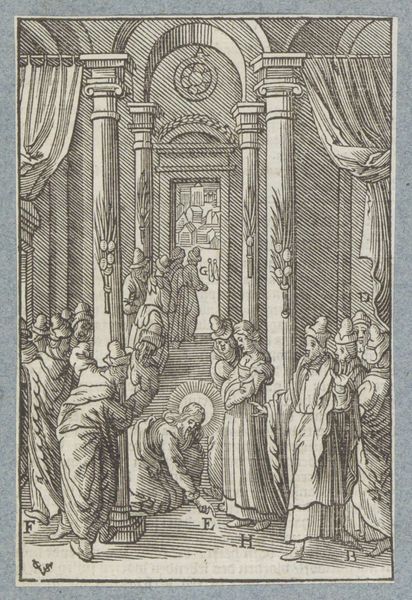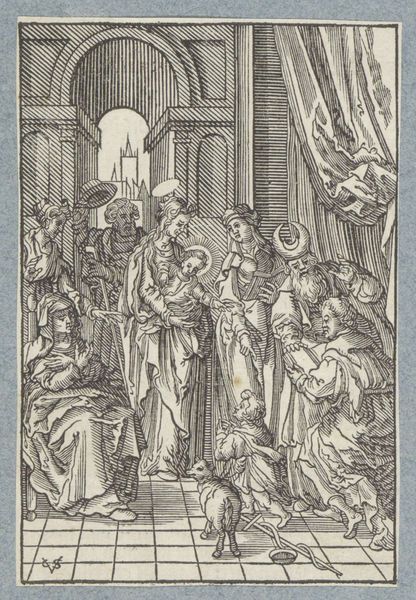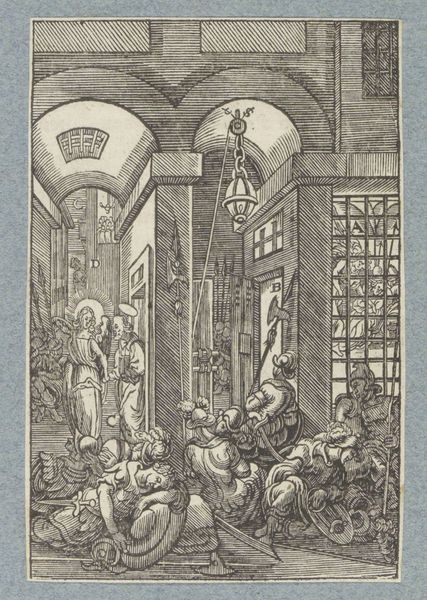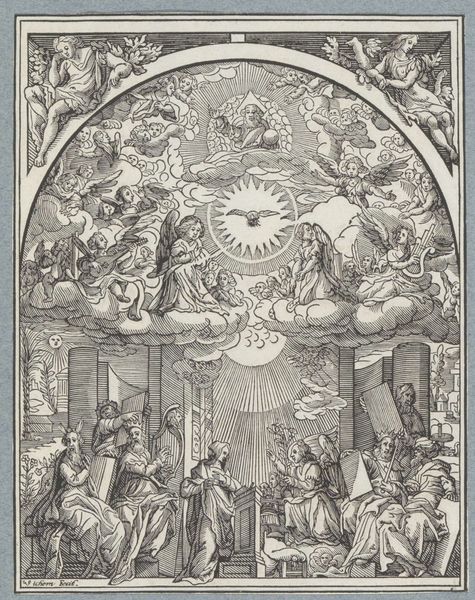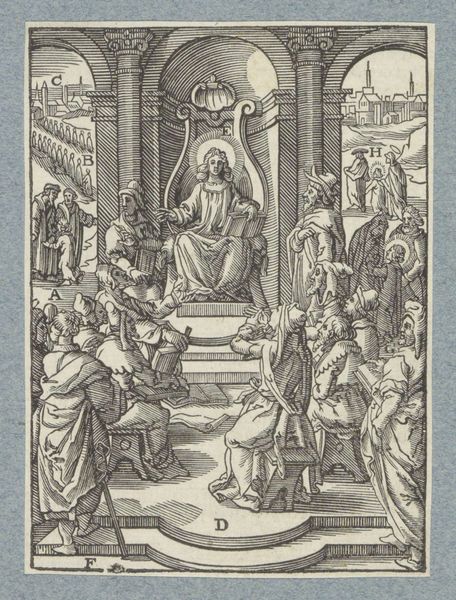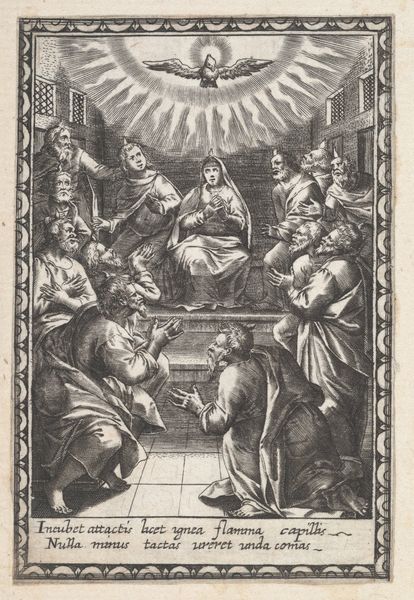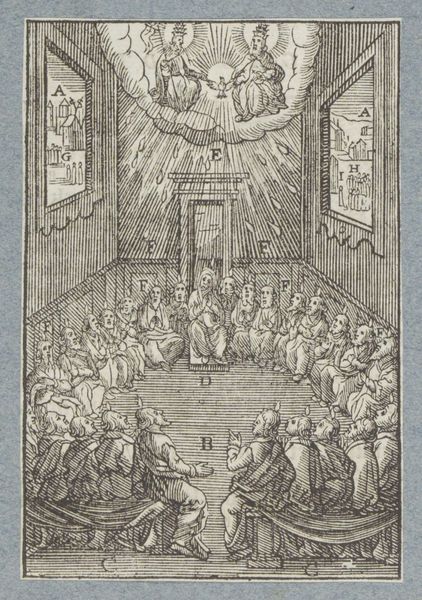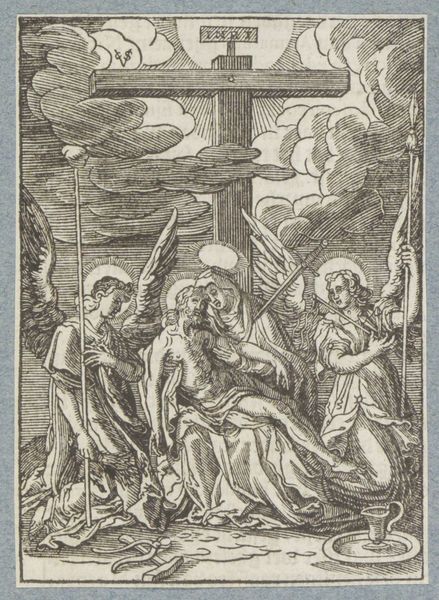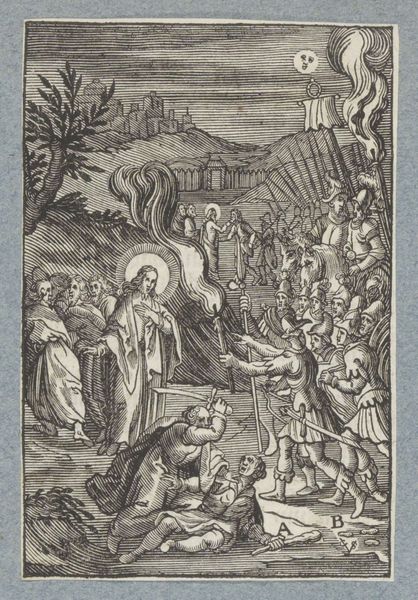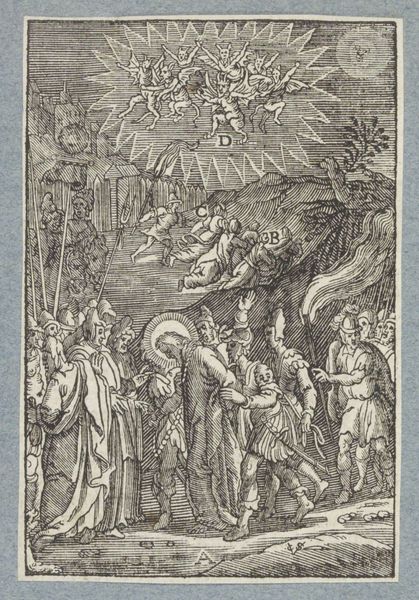
print, engraving
#
medieval
# print
#
figuration
#
pen-ink sketch
#
line
#
history-painting
#
engraving
Dimensions: height 148 mm, width 87 mm, height 215 mm, width 142 mm
Copyright: Rijks Museum: Open Domain
This print, "Laatste Avondmaal," or "Last Supper" was created by Christoffel van Sichem II, likely in the early to mid-17th century, using woodcut techniques. The image is made by carving an image in reverse onto a block of wood. Ink is then applied to the raised surfaces, and the image transferred to paper through pressure. Look closely, and you'll see how the character of the wood itself influences the print's appearance. The lines are bold and graphic, lending a stark, dramatic quality to the scene. Van Sichem masterfully uses these lines to create depth and texture, from the flowing robes of the figures to the intricate architectural details. The woodcut was a key technology in the early modern era, allowing for mass production and dissemination of images. This print would have made the iconic biblical scene accessible to a wide audience. It's a reminder that even images we now consider "fine art" were once deeply embedded in social, religious, and commercial contexts. Considering the materials and means of production allows us to fully appreciate its historical significance.
Comments
No comments
Be the first to comment and join the conversation on the ultimate creative platform.
